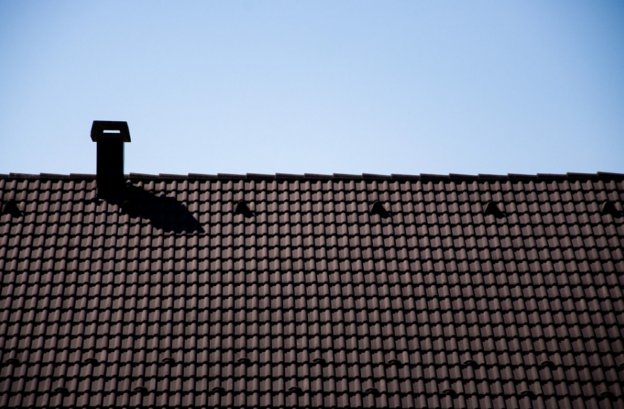The roof over your head is much more than just a shelter; it’s a pivotal design feature, a bulwark against the elements, and an investment in the longevity of your home. With a plethora of roofing materials and installation techniques available, making the best choice for your home can be complex. Homeowners, DIY enthusiasts, and construction professionals alike must consider durability, cost, energy efficiency, and aesthetic appeal when navigating the labyrinth of roofing options. This comprehensive guide will walk you through the various roofing materials, equipping you with the knowledge you need to make a sound decision.
Asphalt Shingles
Asphalt shingles stand out as the most commonly used roofing material in the United States, cherished for their cost-effectiveness, ease of installation, and considerable variety in colors and styles. Comprising a fiberglass or organic base covered with asphalt and mineral granules, these shingles offer a respectable level of durability, generally lasting between 20 to 30 years. They’re particularly suited to residential properties due to their ability to withstand a wide range of weather conditions, from scorching summers to freezing winters. However, their lifespan can be shorter compared to more durable materials like metal or slate, making them a more frequent but financially accessible choice for many homeowners.
Metal Roofing
Metal roofing, an increasingly popular option among homeowners, offers several advantages including longevity, durability, and energy efficiency. Made from materials such as steel, aluminum, copper, or zinc alloy, metal roofs can last up to 50 years or more with proper maintenance. They are exceptionally resistant to extreme weather conditions such as heavy snow, hailstorms, and intense heat. The reflective properties of metal roofs can also significantly reduce cooling costs during hot summer months. Additionally, their versatility in design can complement a wide range of architectural styles, from traditional to contemporary.
Another compelling attribute of metal roofing is its eco-friendliness. Most metal roofing materials are made from a high percentage of recycled content and are 100% recyclable at the end of their lifespan.
Tile Roofing
Tile roofing, revered for its timeless elegance and superb durability, represents a premium roofing option. Traditionally made from clay or concrete, tile roofs are celebrated not only for their aesthetic appeal but also for their ability to withstand decades of exposure to harsh environmental conditions. A well-installed tile roof can last more than 50 years, with some clay tile roofs even reaching a century of use with minimal maintenance. Besides their long lifespan, tile roofs offer excellent insulation properties, helping to keep homes cooler in the summer and warmer in the winter. Their heavy weight can be a drawback, requiring reinforced roof framing for support, but this also makes them highly resistant to wind and earthquake damage. With a vast selection of styles, colors, and finishes, tile roofing can beautifully accentuate the architectural style of a variety of homes, from Mediterranean villas to modern mansions.
Wood Shakes
Wood shakes have been a traditional choice for roofing materials, especially appreciated for their natural appearance and ability to seamlessly blend into natural surroundings. Made from split logs of cedar or redwood, wood shakes offer a unique aesthetic that can enhance the charm and character of rustic or historical homes. Apart from their visual appeal, wood shakes provide excellent insulation, contributing to energy efficiency by keeping homes warmer in the winter and cooler in the summer. However, they require more maintenance than some other roofing materials, including regular treatments to prevent moisture absorption and to protect against mold, mildew, and fire. While wood shakes can last up to 40 years with proper care, their longevity and performance heavily depend on the quality of installation and the climate they are exposed to.
Benefits of Professional Roof Installation
Whether you opt for asphalt shingles, metal roofing, tile roofing, or wood shakes, it’s essential to have your roof professionally installed. A well-installed roof can significantly prolong its lifespan and ensure optimal performance throughout the years. A professional local roofing company can install your chosen roofing material correctly, taking into account factors such as climate, slope, and ventilation to guarantee maximum durability and energy efficiency. Moreover, professional roofing contractors are equipped with the necessary tools, expertise, and experience to handle any challenges that may arise during installation. They can also advise on the best materials and techniques for your specific climate and needs, helping you make an informed decision that meets both your budget and aesthetic preferences. Ultimately, investing in professional roof installation can save you time, money, and potential headaches down the line
Factors to Consider When Choosing Roofing Materials
When selecting roofing materials for your home, several key factors warrant careful consideration to ensure you make a choice that aligns with your needs, budget, and lifestyle. The climate in your region is pivotal; materials that fare well in hot, sunny climates may not perform as well in areas prone to heavy snowfall or high winds. Aesthetic compatibility with your home’s architectural style is crucial for boosting curb appeal and property value. Furthermore, the cost of materials and installation should align with your budget, bearing in mind the long-term savings on maintenance and energy bills. Durability and maintenance requirements are also essential; some materials may require more upkeep but offer a longer lifespan or greater energy efficiency, offsetting initial expenses. Lastly, considering the environmental impact of the roofing material, including recyclability and energy efficiency, can contribute to a more sustainable home. By weighing these factors, homeowners can make an informed decision that best suits their preferences and requirements.
Installation Tactics
Choosing the right installation tactics for your roofing material is crucial for ensuring durability, efficiency, and overall satisfaction with your roofing project. Different roofing materials require unique approaches and techniques to maximize their performance and lifespan. For instance, asphalt shingles might be straightforward to install, but ensuring proper nail placement and shingle alignment is key to preventing future leaks. In contrast, metal roofing installation demands precision in measuring and cutting panels, as well as expertise in sealing joints to maintain weather tightness. Meanwhile, the installation of tile roofs involves not just skill in laying tiles in an overlapping pattern for effective water shedding but also ensuring the roofing structure can support its weight. Similarly, wood shakes necessitate careful attention to detail, including the implementation of a proper underlayment to protect against moisture and adequate spacing to allow wood to breathe and prevent decay.
Each of these materials may also require specific tools and safety equipment. Thus, it’s essential to work with professional roofers who have specific experience with your chosen material to guarantee a successful installation.
Nevertheless, choosing the right roofing material and ensuring it is professionally installed are critical decisions that significantly impact the durability, aesthetics, and efficiency of your home. From the widespread appeal of asphalt shingles and the durable, eco-friendly nature of metal roofing, to the timeless elegance of tile and the natural beauty of wood shakes, each material offers unique benefits. Consideration of climate, architectural style, budget, and environmental impact will guide you towards a roofing solution that meets your needs and preferences. Remember, a well-chosen and properly installed roof not only protects your home from the elements but also enhances its curb appeal and value, making it a wise investment in your property’s future.


